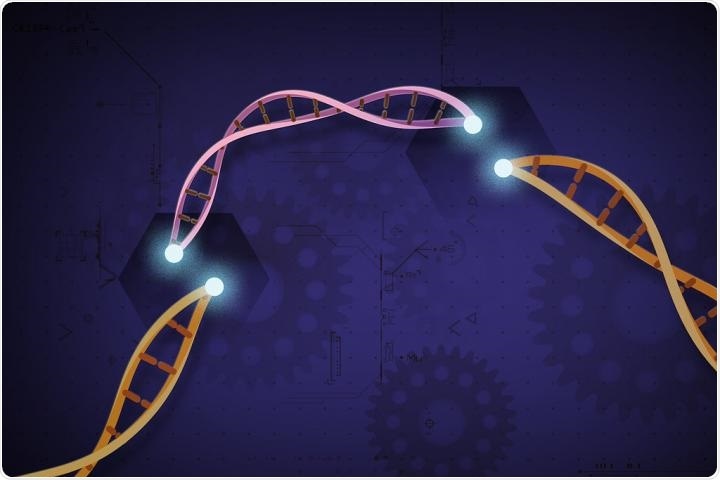In a study reported recently in Nature Plants, Yiping Qi—assistant professor of Plant Science at the University of Maryland—has found a new CRISPR genome engineering system, called CRISPR-Cas12b, that is viable in plants for the first time.

CRISPR gene editing. Image Credit: University of Maryland.
In general, CRISPR is considered as molecular scissors, useful in precision breeding to cut, delete, substitute, or edit a specific trait within DNA.
A majority of the people familiar with CRISPR are probably aware of the CRISPR Cas9 system, which was the primary cause. However, Yiping Qi and the colleagues in his lab are continuously investigating new CRISPR tools that are more advanced, effective, and efficient for various applications in crops that can inhibit diseases, pests, and the effect of climatic changes.
By using CRISPR-Cas12b, Qi presents a system in plants that can be tailored, is versatile, and eventually offers effective gene editing, activation, and repression, all put together in a single system.
This is the first demonstration of this new CRISPR-Cas12b system for plant genome engineering, and we are excited to be able to fill in gaps and improve systems like this through new technology. We wanted to develop a full package of tools for this system to show how useful it can be, so we focused not only on editing, but on developing gene repression and activation methods.”
Yiping Qi, Assistant Professor, Department of Plant Science, University of Maryland
It is exactly this comprehensive range of methods that have essentially been missing in other CRISPR systems in plants. Prior to this study, the two major systems available in plants are CRISPR-Cas9 and CRISPR-Cas12a.
CRISPR-Cas9 is well known for its simplicity and for the identification of short DNA sequences to make cuts in the genome. By contrast, CRISPR-Cas12a enables identifying a distinct DNA targeting sequence and facilitates larger staggered cuts in the DNA with more complexity to tailor the system.
As the names indicate, CRISPR-Cas12b is quite similar to CRISPR-Cas12a, but lacks the strong potential to enable gene activation in plants with this system.
CRISPR-Cas12b offers greater gene activation efficiency, exhibiting the capability for broader targeting sites for gene repression, making it useful in situations where a trait’s gene expression must be switched on (activation) or off (repression).
When people think of CRISPR, they think of genome editing, but in fact CRISPR is really a complex system that allows you to target, recruit, or promote certain aspects already in the DNA. You can regulate activation or repression of certain genes by using CRISPR not as a cutting tool, but instead as a binding tool to attract activators or repressors to induce or suppress traits.”
Yiping Qi, Assistant Professor, Department of Plant Science, University of Maryland
The ability of CRISPR to serve as a binding tool gives CRISPR-Cas12b an edge over CRISPR-Cas12a, specifically if gene activation is the ultimate goal. Moreover, the system retains all the positive aspects that were intrinsic to CRISPR-Cas12a for plants, such as its potential to tailor cuts and gene regulation over a wider range of applications.
The repurposing of CRISPR-Cas12b system could be performed by Qi and the colleagues in his lab for multiplexed genome editing, implying that multiple genes can be simultaneously targeted in a single step.
Added complexity allows targeting of more specific or other effectors for gene activation, repression, or even epigenetic changes. This system is more versatile because we can play with more modifications, more domains, and there are therefore more opportunities to engineer the whole system. Only when you have this kind of hybrid system with more complexity do you get the most robust gene activation and editing capabilities.”
Yiping Qi, Assistant Professor, Department of Plant Science, University of Maryland
The initial study for CRISPR-Cas12b completed in this study was performed using rice—a major global crop. But Qi and his lab believe several other systems can be investigated to strengthen and improve plant genome engineering, which includes the development of applications for additional crops.
Qi concluded, “This type of technology helps increase crop yield and sustainably feed a growing population in a changing world. In the end, we are talking about broad impact and public outreach, because we need to bridge the gap between what researchers are doing and how those impacts affect the world.”
Source:
Journal reference:
Ming, M., et al. (2020) CRISPR–Cas12b enables efficient plant genome engineering. Nature Plants. doi.org/10.1038/s41477-020-0614-6.